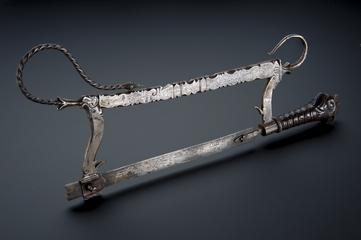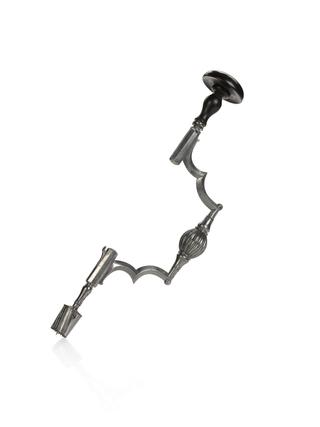




Dupuytren type double-bladed lithotome with pearl indicator plate and ornate ivory handle in perfect condition, from the Hamonic collection by Grangeret, Paris, c.1830
This object was used to cut the bladder in order to remove stones (hard mass in the bladder) – a practice known as lithotomy. Baron Guillaume Dupuytren (1777-1835), a French surgeon and pathologist, invented this double bladed lithotome for the bi-lateral lithotomy procedure he developed in 1812. This procedure became widely used from the 1850s onwards.
Details
- Category:
- Surgery
- Collection:
- Sir Henry Wellcome's Museum Collection
- Object Number:
- A121611
- Materials:
- case, wood, case, cloth, case, felt, lithotome, steel (plated) and lithotome, ivory
- type:
- lithotome
- credit:
- Hamonic Collection




